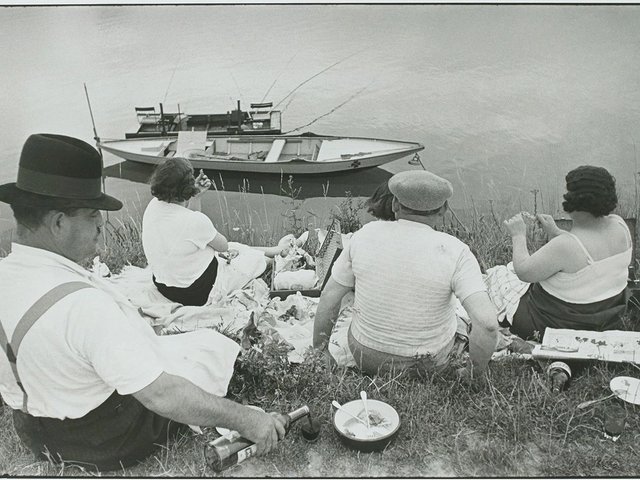London
The Victoria and Albert Museum’s (V&A) determination to offer special exhibitions and one-person shows in addition to the historical perspective of rotating half-yearly selections from an extraordinarily strong collection, kicked in last month with the last exhibition marking Cartier-Bresson’s ninetieth birthday tributes. The UK Photo ’98 has done him proud with shows of his portraits at the National Portrait Gallery, drawings at the Royal College of Art, the “Europeans” at the Hayward G87 dallery and now this.
At the V&A we see his foreign reportage: China before Mao; Ghandi’s funeral; images of racial segregation from a survey of Civil Rights as part of a Magnum initiative to mark the first 100 days of JFK’s presidency, together with extraordinarily contemplative images of Japan; the humorous and intense Mexican photographs and related overseas pictures shot in locations as diverse as Canada and Indonesia.
Many have not been seen in this country since 1979-80. Some are from his major exhibition at the V&A in 1969, others are part of the definitive edition of 390 of his pictures printed ten years later, one of five sets of prints, acquired in 1978.
There are fifty pictures, all chosen by Cartier-Bresson, assisted by Mark Haworth-Booth, the museum’s curator of photography, who says: “He’s terribly rigorous in his selection. He’s so critical of his own work that he only allows things in if they’re geometrically perfect.” Mr Haworth-Booth has invited a number of contemporary photographers to write about aspects of Cartier-Bresson’s work: an Indian photographer, Ram Rahman, on the Indian pictures; Chinese photographer, Wu Jialin, on the Chinese; also a Mexican photographer and Gilles Peres, the Magnum photographer, on the American pictures.
A new display of international photographs chosen by the assistant curator of photography, Charlotte Cotton, draws on the V&A’s collection of 300,000.
It includes donations from the likes of Dorothy Bohm and graphic designer Tibor Kalman, plus exchanges and acquisitions: an incredible “Equivalence” by Alfred Stieglitz; a fascinating sheet of coloured stereoscopes provided with lorgnettes for 3D viewing; a magnificent early paper negative print by Benjamin Brecknell Turner and further examples from Count Aguado’s first carte de visite of 1854, through Roger Fenton, more Julia Margaret Cameron, another Stieglitz photogravure, the odd Manuel Alvarez Bravo, a stunning image of flowers close-up with a view of mourners through the rear window of a hearse in Belfast by Gilles Peres, and works across a broad spectrum of period and style right up to the present. All the usual and some unusual suspects are here plus Cindy Sherman, Richard Prince and younger talents such as Glen Luchford, Corinne Day and Cornelia Parker.
Originally appeared in The Art Newspaper as ‘My choice: Cartier-Bresson'


